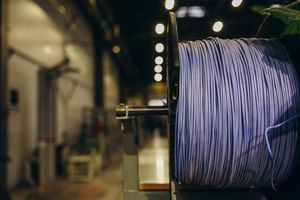Explore the Basics of Brick Making Machines: A Complete Guide for Beginners
Brick making machines are essential equipment in the construction industry, used to produce uniform, high-quality bricks at scale. These machines automate the traditional manual process of mixing, molding, and curing clay or concrete materials into durable building blocks. The shift from manual brick making to automated machinery emerged to meet growing infrastructure demands and improve production efficiency.
Modern brick making machines vary in size and capacity from small, manual models suitable for local production to large, fully automated plants capable of manufacturing thousands of bricks per day. The technology behind them focuses on consistency, speed, and sustainability, helping to reduce waste and support eco-friendly construction practices.
Why Brick Making Machines Matter Today
Brick making machines play a crucial role in today’s construction and real estate industries. With the rapid pace of urbanization and housing development, efficient brick production ensures consistent building material supply for residential, commercial, and infrastructure projects.
Key reasons why this topic matters today:
-
Growing Construction Demand: As cities expand, the need for sustainable, cost-effective building materials continues to rise.
-
Quality Control: Machine-made bricks ensure uniform strength and shape, improving overall construction quality.
-
Environmental Impact: Modern machines help reduce waste by recycling fly ash and other industrial by-products.
-
Labor Efficiency: Automation reduces dependency on manual labor, speeding up production.
Industries such as real estate development, government housing programs, and private construction all benefit from reliable brick manufacturing systems. For small-scale entrepreneurs, understanding these machines offers opportunities to start efficient brick production units.
Recent Developments and Industry Trends
The brick manufacturing industry has seen significant technological advancements in the past few years, driven by environmental policies and digital transformation in construction.
Recent trends and updates include:
| Development | Description |
|---|---|
| Introduction of energy-efficient machines | Manufacturers introduced automatic brick presses using less power and optimized clay use. |
| Rise of eco-friendly brick materials | Growing demand for fly ash, sand-lime, and concrete bricks to reduce carbon emissions. |
| Integration of IoT and automation | Smart monitoring systems now track temperature, humidity, and curing time for higher efficiency. |
In addition, India, China, and several African nations have seen steady adoption of semi-automatic and fully automatic brick machines to meet their housing goals. Global manufacturers are also focusing on modular systems that can be easily transported and installed in rural or developing regions.
The increasing emphasis on sustainability has made eco bricks (made from recycled or low-carbon materials) a growing trend. The United Nations’ Sustainable Development Goals (SDGs) have also influenced policies encouraging cleaner brick manufacturing technologies.
Government Regulations and Policies
Brick making is regulated under several national and regional environmental laws. In countries like India, the National Green Tribunal (NGT) and Central Pollution Control Board (CPCB) oversee the industry to ensure compliance with air quality and emission standards.
Some of the key regulatory frameworks affecting the brick making industry include:
-
Environmental Protection Rules (1986): Restrict the use of topsoil and promote fly ash utilization.
-
Fly Ash Notification (2021 Amendment): Mandates the use of fly ash-based bricks within 300 km of thermal power plants.
-
Energy Conservation Building Code (ECBC): Encourages use of energy-efficient materials, including machine-made bricks.
-
Local Industrial Licensing Requirements: Vary by region but often require clearance from pollution control boards.
Governments are also promoting the Compressed Stabilized Earth Block (CSEB) and clay interlock brick technologies through subsidy programs and training initiatives. These policies aim to reduce pollution and promote greener, more durable construction materials.
Tools and Resources for Brick Making
Starting or optimizing brick production requires access to the right tools, information, and software. Whether you’re a beginner or running an established unit, these resources can help streamline your operations.
Essential Tools and Equipment:
-
Clay Mixer or Pan Mixer: For uniform mixing of raw materials.
-
Brick Press or Molding Machine: Shapes the bricks under high pressure.
-
Curing Chamber: Controls humidity and temperature for strength development.
-
Conveyor Systems: Automate material handling and reduce manual effort.
Helpful Digital Tools and Resources:
| Tool/Platform | Purpose | Description |
|---|---|---|
| Brick Calculator | Estimation | Calculates the number of bricks required for specific wall dimensions. |
| Autodesk Revit | Design Integration | Helps plan brick layouts and visualize construction projects. |
| Fly Ash Resource Center (India) | Government Resource | Offers guidance on sourcing and using fly ash for bricks. |
| Construction Material Estimator Apps | Mobile Utility | Allows quick cost and quantity estimations for raw materials. |
| CPCB Guidelines Portal | Compliance | Provides updated rules for emissions and waste management in brick kilns. |
These tools support accuracy, reduce errors, and help comply with government and environmental standards.
Frequently Asked Questions
1. What is the main difference between manual and automatic brick making machines?
Manual machines rely on human effort to fill and compress molds, while automatic machines use motors, sensors, and hydraulic systems to automate the process, allowing faster and more consistent production.
2. Are brick making machines eco-friendly?
Many modern machines are designed to reduce environmental impact by recycling materials such as fly ash and minimizing energy use. Using eco-friendly raw materials makes the process more sustainable.
3. What materials are commonly used in brick making?
Clay, fly ash, cement, sand, and lime are the most common materials. The mixture depends on the desired strength, durability, and environmental standards.
4. How does automation improve brick quality?
Automation ensures uniform pressure, curing, and drying conditions, leading to stronger and more dimensionally consistent bricks. It also minimizes human error and material waste.
5. Are there government incentives for eco-friendly brick making?
Yes. Several governments, including India and the EU member states, offer tax rebates, subsidies, and training programs for adopting cleaner brick manufacturing technologies.
Conclusion
Brick making machines are transforming the way construction materials are produced, offering precision, efficiency, and sustainability. From traditional clay machines to modern fully automated systems, the evolution of this technology continues to shape global construction practices.
Understanding how these machines operate, staying informed about environmental regulations, and utilizing modern digital tools can help manufacturers and builders produce better-quality bricks while minimizing waste and emissions.
The future of brick making lies in automation, eco-materials, and energy efficiency three pillars that ensure a more sustainable and resilient construction industry.





